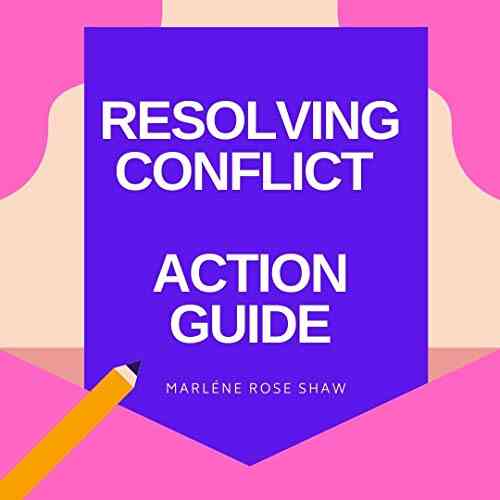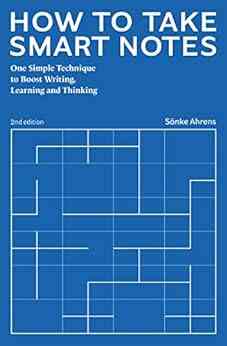The Ultimate Guide to Yoga Nidra Meditation: Reducing Anxiety and Increasing Concentration

Anxiety has become a common issue in today's fast-paced world. Stress, pressure, and constant thoughts can easily overwhelm us, affecting our mental health and overall well-being. However, there is a powerful practice called Yoga Nidra Meditation that can help reduce anxiety and increase concentration.
Yoga Nidra, also known as "yogic sleep," is a form of meditation that guides you into a state of deep relaxation while maintaining full consciousness. It involves systematically relaxing each part of your body and exploring your inner self, ultimately leading to a state of profound peace and tranquility.
The Science Behind Yoga Nidra Meditation
Yoga Nidra has gained significant attention in recent years due to its scientifically proven benefits. Scientific studies have shown that practicing Yoga Nidra for a mere 20-30 minutes can significantly reduce anxiety levels and increase overall mental well-being.
4.1 out of 5
| Language | : | English |
| File size | : | 1718 KB |
| Text-to-Speech | : | Enabled |
| Enhanced typesetting | : | Enabled |
| Word Wise | : | Enabled |
| Print length | : | 8 pages |
| Lending | : | Enabled |
| Screen Reader | : | Supported |
When practicing Yoga Nidra, your brain enters what is known as the "hypnagogic state," which is the state between wakefulness and sleep. In this state, your brain waves slow down, entering the theta and delta brainwave frequencies. These frequencies are associated with deep relaxation, creativity, and enhanced learning abilities.
The delta brainwave frequency is particularly relevant when it comes to reducing anxiety. It helps calm the nervous system by decreasing the production of stress-related hormones such as cortisol. By regularly practicing Yoga Nidra, you can train your brain to enter this state more easily, leading to reduced anxiety overall.
The Benefits of Yoga Nidra Meditation
Yoga Nidra offers a plethora of benefits for both mental and physical well-being. Here are some of the key advantages:
1. Reduces Anxiety and Stress:
As mentioned earlier, Yoga Nidra helps in reducing anxiety and stress levels by calming the nervous system and promoting deep relaxation. It allows your body and mind to release tension and find a sense of inner calm.
2. Enhances Concentration and Focus:
Regular practice of Yoga Nidra improves concentration and focus by training your mind to stay present and attentive. It enhances cognitive abilities and promotes clarity of thought.
3. Improves Sleep Quality:
Yoga Nidra is an excellent practice for those struggling with insomnia or poor sleep quality. By inducing a deep state of relaxation, it helps regulate sleep patterns and promotes a restful night's sleep.
4. Boosts Creativity:
Yoga Nidra stimulates the creative side of your brain by accessing the theta brainwave frequency. This state promotes unique insights, artistic inspiration, and innovative problem-solving abilities.
5. Enhances Emotional Well-being:
Practicing Yoga Nidra cultivates self-awareness and allows for the exploration of your inner landscape. It helps release emotional blocks, heal past wounds, and promote overall emotional well-being.
How to Practice Yoga Nidra Meditation
Here is a step-by-step guide to help you practice Yoga Nidra Meditation:
Step 1: Find a Comfortable Position
Lie down on a yoga mat or a comfortable surface, ensuring that your body is fully supported. Use pillows or blankets if needed to create a cozy and relaxed environment.
Step 2: Set an Intention
Before beginning the practice, set an intention for your meditation. It can be something like "I intend to reduce anxiety and increase concentration."
Step 3: Relax Your Body
Start at the crown of your head and slowly work your way down, consciously relaxing each part of your body. Feel the tension melting away with each breath.
Step 4: Focus on Your Breath
Direct your attention to your breath. Observe each inhalation and exhalation, allowing your breath to become slower and deeper.
Step 5: Visualize and Reflect
Engage your imagination and visualize a serene and peaceful place. It can be a beach, a forest, or any location that brings you a sense of calm. Reflect on positive affirmations or goals that align with your intention.
Step 6: Explore Your Inner Self
Gradually shift your awareness to your inner self. Witness your thoughts, emotions, and sensations without judgment. Allow them to come and go, maintaining a state of detached observation.
Step 7: Awaken Your Senses
Bring your awareness back to the physical sensations in your body. Start moving your fingers, toes, and gently stretch your body. Take your time to transition back to your surroundings.
Step 8: Practice Gratitude
Before concluding your practice, take a moment to express gratitude for this time of relaxation and self-care. Express appreciation for your body, mind, and the ability to experience peace.
Incorporating Yoga Nidra into Your Daily Routine
Consistency is key when it comes to reaping the benefits of Yoga Nidra. Here are some tips to help you incorporate this powerful practice into your daily routine:
1. Set a Specific Time:
Choose a time of the day when you can dedicate yourself fully to the practice of Yoga Nidra. Ideally, morning or evening hours work best, as they are generally more peaceful.
2. Create a Peaceful Environment:
Find a quiet and comfortable space where you can practice without distractions. Dim the lights, use essential oils, or play calming music to enhance your experience.
3. Use Guided Yoga Nidra Meditations:
If you're new to Yoga Nidra, consider using guided meditation recordings or smartphone applications. These resources can help you better understand the process and provide a structured practice.
4. Start with Short Sessions:
Begin with shorter sessions, gradually increasing the duration as you become more comfortable with the practice. Start with 20 minutes and aim to practice Yoga Nidra for at least 30 minutes each day.
5. Prioritize Self-Care:
Remember that Yoga Nidra is a form of self-care. Prioritize your mental well-being by committing to the practice regularly, even on busy days.
Yoga Nidra Meditation is a powerful tool for reducing anxiety, enhancing concentration, and improving overall mental health. By entering a state of deep relaxation and exploring your inner self, you can release tension, calm your nervous system, and find a sense of peace.
Incorporate Yoga Nidra into your daily routine and experience the transformative benefits it offers. Embrace this ancient practice, and witness the positive impact it has on your life.
4.1 out of 5
| Language | : | English |
| File size | : | 1718 KB |
| Text-to-Speech | : | Enabled |
| Enhanced typesetting | : | Enabled |
| Word Wise | : | Enabled |
| Print length | : | 8 pages |
| Lending | : | Enabled |
| Screen Reader | : | Supported |
The 61 Points of Light Yoga Nidra is a meditation exercise. Yoga Nidra, is a sleep-like state that Yogis have reported to experience while meditating. It is said to be one of the deepest possible states of relaxation one can achieve while still maintaining full consciousness. This meditation is highly effective for reducing tension and anxiety, balancing the autonomic nervous system and for undoing various tension and anxiety related symptoms such as poor concentration, chest and abdominal pain, palpitations of the heart, and sleep and memory disturbances. It has also been used to help soldiers cope with post traumatic stress disorder (PTSD).
Do you want to contribute by writing guest posts on this blog?
Please contact us and send us a resume of previous articles that you have written.




















Light bulbAdvertise smarter! Our strategic ad space ensures maximum exposure. Reserve your spot today!

 Houston PowellAlice Adventures In Wonderland Illustrated Edition - A Journey into Fantasy
Houston PowellAlice Adventures In Wonderland Illustrated Edition - A Journey into Fantasy Adrien BlairFollow ·15k
Adrien BlairFollow ·15k John KeatsFollow ·12.1k
John KeatsFollow ·12.1k Isaiah PowellFollow ·3k
Isaiah PowellFollow ·3k Hugh BellFollow ·13.8k
Hugh BellFollow ·13.8k Duncan CoxFollow ·6.5k
Duncan CoxFollow ·6.5k Zachary CoxFollow ·11.1k
Zachary CoxFollow ·11.1k Douglas FosterFollow ·10.1k
Douglas FosterFollow ·10.1k Jessie CoxFollow ·4.8k
Jessie CoxFollow ·4.8k

 Fletcher Mitchell
Fletcher MitchellPoems About Lovers, Family, Friends And Home -...
Poetry has always been a powerful...

 Darius Cox
Darius CoxThe Friendship Poems Of Rumi: Discover the Timeless...
Friendship is a sacred bond that...

 Gordon Cox
Gordon CoxLet Go Of Who You Think You're Supposed To Be And Embrace...
Have you ever felt like you were living a...

 Truman Capote
Truman CapoteTreasure Of Pearls Celebrating Life Lived In Poetry:...
Life is a wondrous journey, filled with...

 Jaime Mitchell
Jaime MitchellThe World Of Otome Games Is Tough For Mobs: An Epic...
Welcome to the magnificent realm of...

 Jules Verne
Jules VerneMiss You My Darling - The Powerful Emotions of Longing
Do you ever find yourself longing for...

 F. Scott Fitzgerald
F. Scott FitzgeraldThe Iliad of Homer Illustrated Edition: A Timeless Epic...
The Iliad of Homer is a captivating tale...

 Gene Powell
Gene PowellWho Would Search For Pearls Must Dive Below
The Ultimate...

 Bret Mitchell
Bret MitchellHow To Create Animated And Professional Videos Using...
Apple Keynote is not just limited to...

 Caleb Long
Caleb LongThe Incredible World of Aromatic Herbs: Unveiling their...
Are you looking to add a burst of flavor...

 Charlie Scott
Charlie ScottCry Baby Mystic Free Verse Editions: Embracing Emotions...
Poetry has long been a means of...

 Kendall Ward
Kendall WardThe Ultimate Action Guide For Resolving Conflict: Expert...
Conflict is an inevitable part...
4.1 out of 5
| Language | : | English |
| File size | : | 1718 KB |
| Text-to-Speech | : | Enabled |
| Enhanced typesetting | : | Enabled |
| Word Wise | : | Enabled |
| Print length | : | 8 pages |
| Lending | : | Enabled |
| Screen Reader | : | Supported |



















